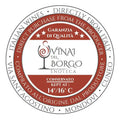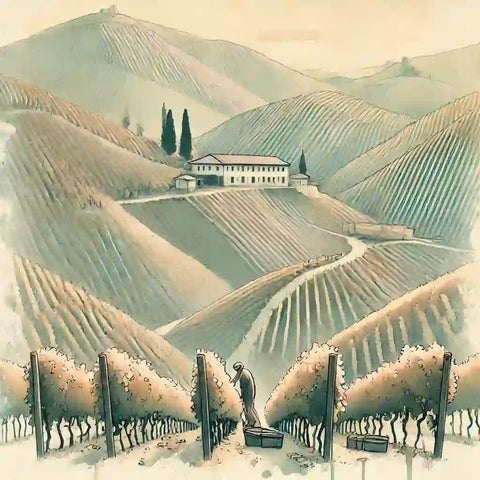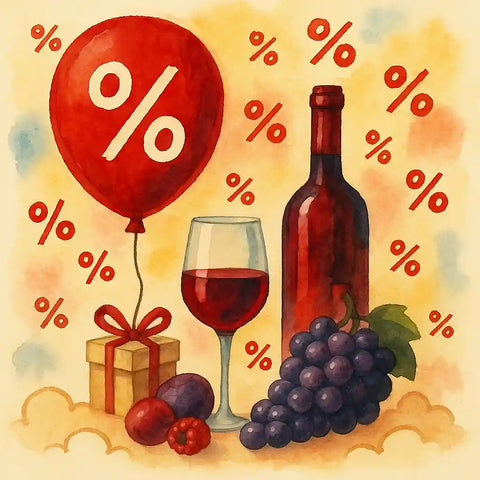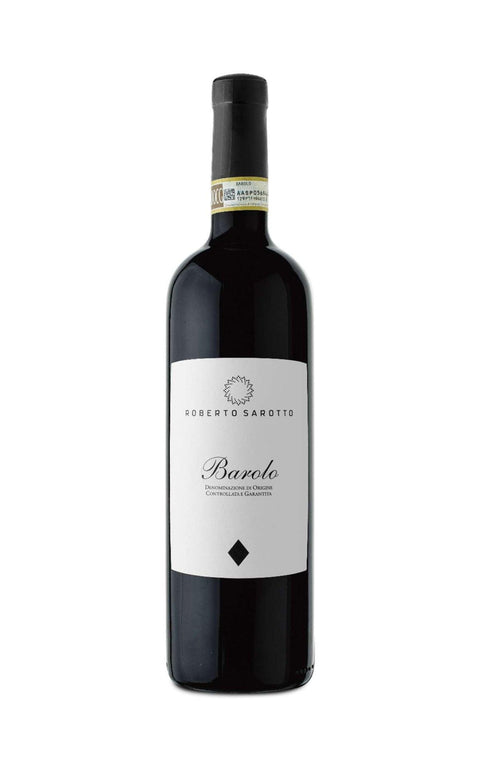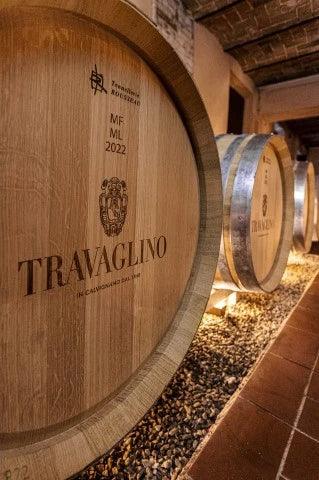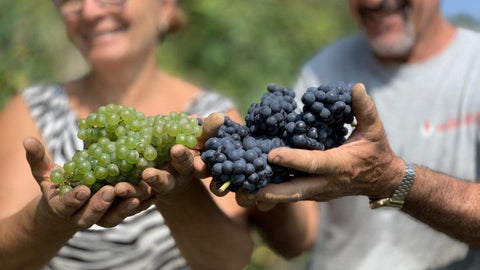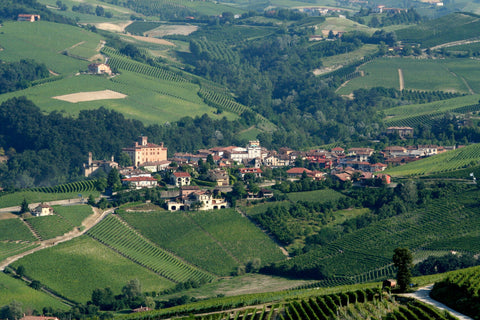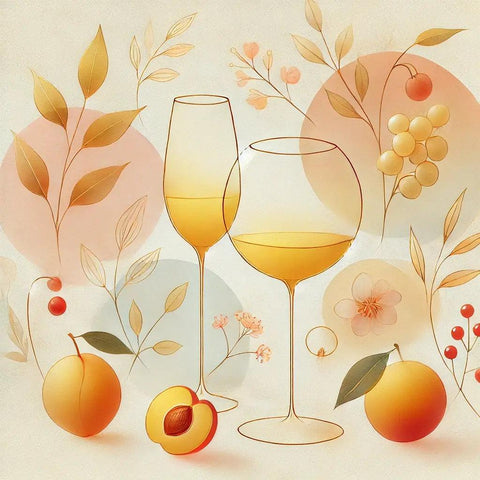Glossary of Italian White Wines and Grape Varieties
Refining on the yeasts
Technique used in quality white wines to impart complexity, roundness and hints of bread, butter or dried fruit.
Acidity
Key element in white wines, responsible for freshness and aging capacity.
Aromaticity
Marked olfactory characteristic, typical of vines such as Gewürztraminer, Moscato and Malvasia.
Batonnage
Technique of stirring the fine lees during aging to enrich the body of the wine.
Macerated white
White wine produced with maceration on the skins, obtaining structure and more intense colour (orange wine).
Sparkling white
White wine with light natural or induced effervescence, pleasant and refreshing.
White of Whites
Sparkling wine produced exclusively from white grapes, often Chardonnay, with a fine, mineral profile.
Clarification
Procedure for clarifying wine by eliminating solid impurities after fermentation.
Fermentation stop
Technique for obtaining sweet white wines by stopping fermentation to conserve residual sugars.
Low temperature fermentation
It allows you to preserve the floral and fruity aromas typical of the freshest whites.
Floral
Aromatic profile reminiscent of fresh flowers such as acacia, orange blossom, lime or elderberry.
Fruity
Classic profile of young whites, with notes of apple, pear, peach, citrus or tropical fruits.
Sugar content
Sugar content indicator, useful for distinguishing between dry, medium-dry and sweet wines.
Clarity
Visual indicator of quality, a clear white wine appears bright and transparent.
Minerality
Taste or olfactory sensation that recalls chalk, flint, salinity: typical of terroir whites.
Serving temperature
White wines are generally served between 8°C and 12°C, depending on their structure and complexity.
White grape
Grape variety whose grapes are devoid of colouring pigments, used to produce white wines and some sparkling wines.
Verdicchio
An elegant and versatile Marche grape variety, known for its freshness, structure and evolutionary potential.
Vermentino
Mediterranean white grape, grown in Liguria, Tuscany and Sardinia. Citrus, salty, floral notes.
Fiano
Noble grape variety from Campania, deep, floral and fruity, with great longevity.
Greek
An ancient Campanian grape variety, it produces savoury and mineral white wines, excellent for ageing.
White Malvasia
Fragrant grape present in many Italian regions, often used in blends for its aroma.
White Muscat
Aromatic grape variety used for sweet, sparkling or still wines, scented with orange blossom, sage and peach.
Garganega
Soave grapes produce elegant, floral and mineral white wines that hold up well over time.
Courteous
Piedmontese grape variety at the base of Gavi DOCG: fresh, citrusy, with good balance.
Arneis
Typical white grape from Roero, with fine aromas of white flowers, pear, aromatic herbs.
Timorasso
Ancient Piedmontese vine rediscovered, it produces long-lived, structured and mineral white wines.
Trebbiano
Common name for several varieties, including Trebbiano Toscano and Trebbiano d'Abruzzo. Fresh, light, sometimes surprising wines.
Passerina
Grapes from the Marche and Abruzzo regions, perfect for dry, fruity whites or light sparkling wines.
Pecorino
Abruzzo and Marche vine, aromatic, savoury, with excellent freshness and structure.
Inzolia
Fresh and floral Sicilian grape variety, also used for sparkling wines and blends with Catarratto or Grillo.
Catarratto
Native Sicilian white grape, it produces dry, citrusy wines with discrete acidity and body.
Cricket
Sicilian grape variety used for dry white wines and Marsala. Fresh, savory, with hints of flowers and almond.
Zibibbo
Synonym for Moscato d'Alessandria, an aromatic grape variety used in Sicily for sweet or dry wines with intense aromas.
Chardonnay
International but also successfully cultivated in Italy. Versatile, elegant, used for still and sparkling wines Metodo Classico.
Pinot Blanc
Fine vine, with a sober and elegant profile, grown in Alto Adige and Friuli. Also excellent for sparkling wines.
Pinot Grigio
Among the most exported white wines in Italy, fresh, floral, light, produced mainly in the North-East.
Sauvignon Blanc
Aromatic vine grown mainly in Friuli and Alto Adige. Notes of boxwood, grapefruit, tomato leaf.
Gewurztraminer
Aromatic grape par excellence, grown in Alto Adige. Intense, spicy, floral, also suitable for ethnic dishes.
Yellow Ribolla
Friulian grape, very fresh and citrusy, often vinified with maceration for more complex profiles.
Manzoni Crossroads
Hybrid vine created in Veneto between Riesling and Pinot Bianco. Elegant, mineral and fresh.
Grasslight
Native Piedmontese grown in Canavese. Used for quality dry whites, passitos and sparkling wines.
Greek
Umbrian-Lazio grape variety, full-bodied and fruity, often the basis of Orvieto wine. Also excellent on its own.
Albana
Romagna grape with thick skin and great aromatic richness, also excellent for sweet wines.
Favorite
Piedmontese grape similar to Vermentino, delicate, citrusy and floral. Typical of Roero.
Vernaccia of San Gimignano
The only Tuscan DOCG for white wines. Dry, mineral, elegant wine, often with a light almond finish.
Color
Although known as a red grape, it is sometimes vinified as a white or rosé, offering structure and flavor.
Charmat Method
Sparkling winemaking technique in an autoclave, often used for sparkling and aromatic white wines, such as Prosecco.
Classic Method
Refermentation in the bottle, a technique used for elegant and complex sparkling wines, even from white grapes.
Alcoholic fermentation
Process in which the sugars of the grapes are transformed into alcohol and carbon dioxide by the yeasts. In white wines it is carried out at low temperatures to preserve the aromas.
Malolactic fermentation
Conversion of malic acid to lactic acid. In whites it is optional and used to soften acidity and add creaminess.
White winemaking
Method in which the grapes (even red ones) are pressed immediately and fermented without skins, to obtain a clear and delicate wine.
Filtration
Physical procedure for clarifying wine, eliminating yeasts and residues. It can be sterile, tangential or cartridge.
Static decantation of the must
Natural method for separating solids from the must before fermentation, essential for clarity in white wines.
Tartaric stability
Control of tartaric acid crystals that can form in bottled white wines, often solved by refrigeration.
Oxygen protection
Common practice in white wine production to preserve fresh aromas and prevent premature oxidation.
Reduction
Condition caused by the absence of oxygen, which can give off sulphurous odours. In young, fresh white wines, a slight reduction can protect the primary aromas.
Freshness
Sensory perception linked to the acidity and liveliness of the wine. In white wines it is a fundamental qualitative parameter.
Body
Fullness in the mouth. Light whites have a lean body, while those aged in wood or on the lees are more structured.
Persistence
Duration of taste sensations after swallowing. In fine white wines it can be long and complex.
Aftertaste
Flavors that are perceived after swallowing the wine. In white wines, it can reveal mineral, fruity or slightly bitter notes.
Oxidation
Excessive contact with oxygen can alter color and aromas. In whites, it leads to golden hues and aromas of baked apple or nuts.
Wood (refined in)
Use of barriques or large barrels for wine maturation. In whites it adds body, toasted, spicy and vanilla notes.
Aromatic breadth
The ability of wine to express a wide range of aromas. In white wines, it is an indicator of quality and complexity.
Elegance
Balance between aromatic, acidic and alcoholic components. In whites it manifests itself in finesse and harmony of the sip.
Verticality
Taste profile driven by freshness and acid tension. In whites it is synonymous with precision and length.
Spontaneous fermentation
Fermentation conducted by indigenous yeasts present on the skins or in the cellar. In whites it can increase complexity and territoriality.
Wine of the sea
Oxidative method in which the white wine matures under a veil of yeasts, as in the Jura style. Rare in Italy but similar to some meditation wines.
Acetic hint
Presence of acetic acid or ethyl acetate which can give off pungent notes. In fresh whites it is considered a defect.
Primary aromas
Fragrances that come directly from the grapes, such as flowers, fresh fruit, aromatic herbs. Characterize young and varietal whites.
Secondary aromas
Aromas that develop during fermentation, such as hints of yeast, baking or lactic ferments. Typical of white wines aged on yeasts.
Tertiary aromas
Aromas that develop with aging, such as honey, dried fruit, hydrocarbons or spices. Present in white wines that are matured or aged in wood.
Floral notes
Hints reminiscent of white flowers, orange blossom, acacia, jasmine, elderberry or linden. Typical of fresh and aromatic whites.
Fruity notes
Recognizable in many whites: green apple, pear, peach, apricot, citrus fruits, tropical fruits such as pineapple, mango or passion fruit.
Herbaceous notes
Vegetal aromas that recall fresh grass, tomato leaf, sage, mint or boxwood. Typical of Sauvignon Blanc or wines from cool areas.
Mineral notes
Olfactory or gustatory sensations that evoke flint, chalk, wet shell or salinity. They characterize terroir white wines.
Citrus notes
Fresh aromas reminiscent of lemon, grapefruit, lime or citron peel. They give vivacity and freshness to young white wines.
Tropical Notes
Aromas reminiscent of ripe exotic fruits such as banana, pineapple, passion fruit. Widespread in white wines from warm climates or aromatic fermentations.
Spicy notes
Delicate hints of white pepper, vanilla, cinnamon or ginger, often linked to the use of wood or the evolution of the wine.
Toasted notes
Aromas of grilled bread, hazelnut, butter or caramel. They come from the aging in barrique or from the autolysis of the yeasts.
Oxidative notes
Hints of ripe apple, dried fruit, nuts or honey. Present in whites that are intentionally oxidized or aged for a long time.
Lactic notes
Aromas reminiscent of yogurt, cream or butter, due to malolactic fermentation or aging on fine lees.
Honeyed notes
Hints of acacia or wildflower honey, typical of evolved or sweet white wines, such as Riesling or mouldy ones.
Smoky notes
Smoky or flint aromas, often linked to volcanic terroir or reductive vinification. Typical of whites from mineral soils.
Hydrocarbon Notes
Petrol- or kerosene-like aromas, characteristic of some aged Rieslings and indicative of positive evolution.
Fresh mouth
Lively and refreshing taste sensation, mainly given by acidity. Essential for aperitif or summer whites.
Soft mouth
Velvety and enveloping sensation, often linked to whites aged in wood or fermented with malolactic.
Salt mouth
Sensation of minerality and savouriness to the taste, which stimulates salivation. Present in white wines from marine or volcanic areas.
Citrus mouth
Taste profile dominated by lemon, grapefruit or lime, which gives freshness and verticality to the sip.








